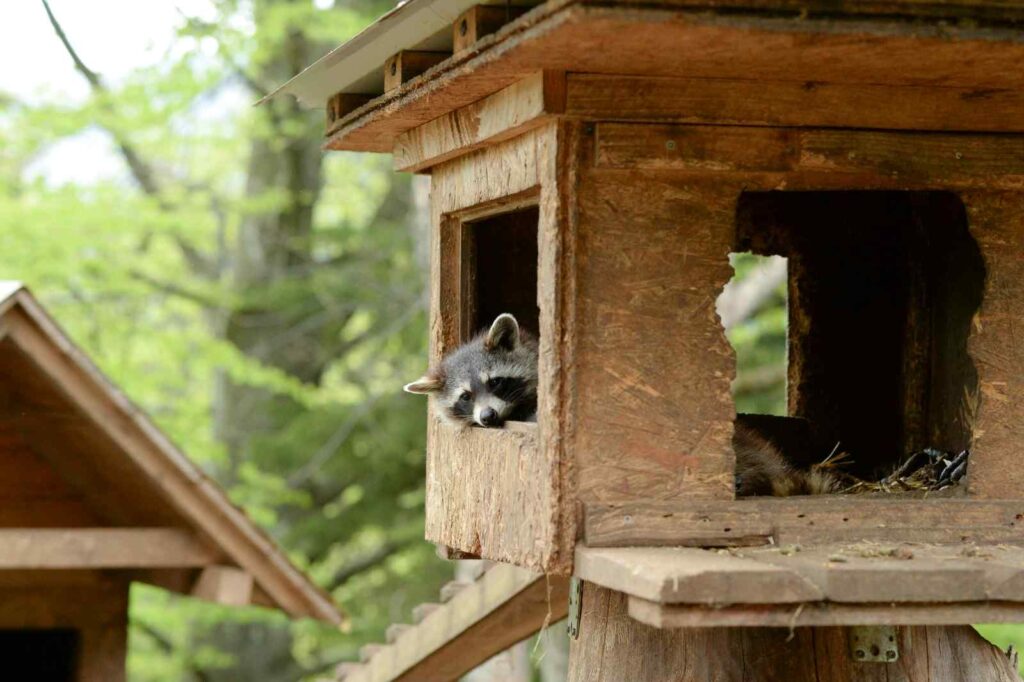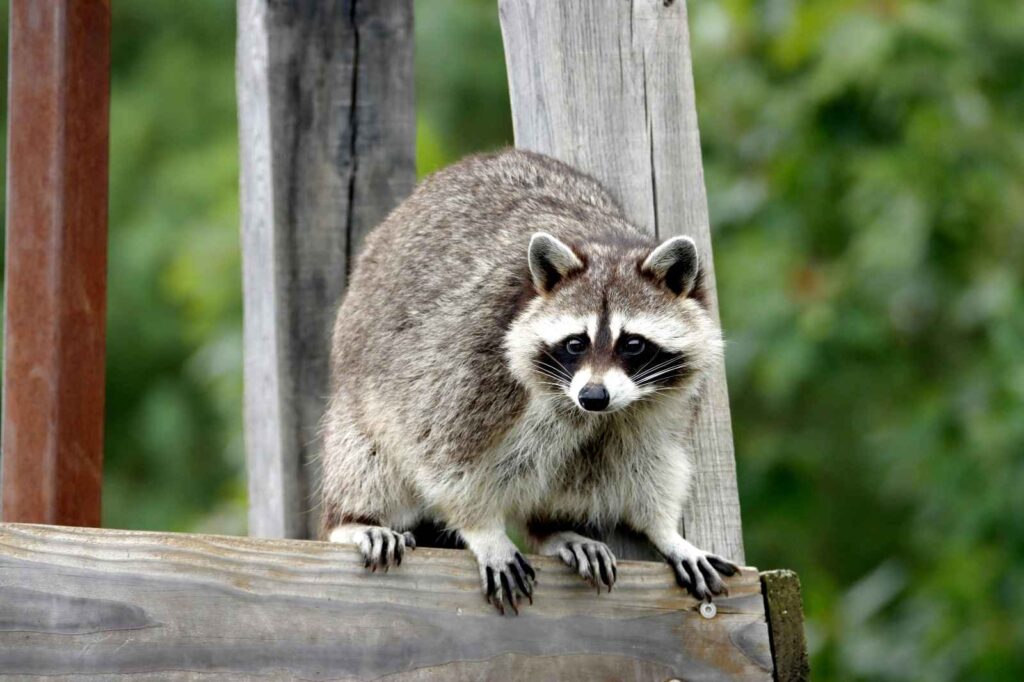Why Are There So Many Raccoons in Cities? The Hidden Truth You Never Knew


Imagine this: you wake up to a symphony of clattering bins, only to peer out your window and witness a scene straight out of a wildlife documentary. A masked bandit, with eyes gleaming in the pre-dawn light, is expertly prying open your supposedly raccoon-proof garbage can. This isn’t an isolated incident; it’s a nightly occurrence for countless urban dwellers.
From Toronto, often dubbed the “Raccoon Capital of the World,” to bustling metropolises across North America, these furry troublemakers have become an undeniable part of the urban landscape. But why are there so many raccoons in our cities? The answer, a hidden truth you may never have considered, lies not just in their adaptability, but in our own unwitting contributions to their urban dominion. Get ready to uncover the surprising reasons behind the raccoon uprising and what it means for our shared urban spaces.
1. Raccoons: Nature’s Ultimate Survivors
Raccoons (Procyon lotor) are far more than just cute, masked creatures. They are nature’s ultimate survivors, equipped with an astonishing blend of intelligence, dexterity, and adaptability that makes them perfectly suited for urban life. Their primate-like paws, often compared to those of a four-year-old child, allow them to manipulate objects with incredible precision, from unlatching garbage bins to navigating complex urban obstacles.
Their problem-solving skills are legendary; early 20th-century scientists attempting to study their intelligence often gave up in frustration as these cunning creatures repeatedly broke out of their enclosures. This innate cleverness, combined with their omnivorous diet and nocturnal habits, has allowed them to thrive in environments that would be hostile to many other wild animals.

2. The Shift from Forest to City
The narrative of raccoons moving into cities is often misunderstood. It’s less about them packing their bags and relocating, and more about our cities expanding into their existing habitats. As urbanization sprawls, forests and natural areas are replaced by subdivisions, commercial centers, and infrastructure. While this loss of habitat can be devastating for many species, raccoons, with their remarkable adaptability, have found new opportunities within these expanding urban frontiers.
A hollow log in the woods might be replaced by a warm attic, a cozy chimney, or even an abandoned garage. These man-made structures often provide superior shelter and denning sites compared to their natural counterparts, offering protection from predators and the elements. The city, in essence, has become a new, resource-rich wilderness for these resourceful creatures.
3. What Attracts Raccoons to Urban Areas?
The allure of the city for raccoons is simple: an abundance of easily accessible food and shelter. Our overflowing garbage bins are a veritable buffet, offering a consistent and varied diet of discarded human food. Backyard gardens become prime foraging grounds for fruits and vegetables, while pet food left outdoors and bird feeders provide convenient, high-calorie snacks. Beyond food, cities offer a plethora of safe and warm denning sites.
Attics, chimneys, crawl spaces, and sheds provide ideal locations for raising young and escaping harsh weather conditions. The urban environment, with its dense human population, inadvertently creates a perfect ecosystem for raccoons, offering a constant supply of sustenance and sanctuary that often surpasses what they would find in the wild.
4. Human Behavior Is Making It Worse
While raccoons are undeniably opportunistic, human behavior plays a significant role in exacerbating their presence in urban areas. A primary culprit is the lack of secured garbage bins. Open or easily accessible trash cans are an open invitation for a nightly feast, teaching raccoons that urban areas are reliable food sources. Furthermore, intentional or unintentional feeding of wildlife contributes to the problem.
Leaving pet food outside, not cleaning up fallen fruit from trees, or even deliberately feeding raccoons can lead to them associating humans with food, making them bolder and more reliant on human-provided sustenance. Poor waste management practices, such as overflowing public bins or construction sites with exposed food waste, further contribute to creating a raccoon-friendly environment. We are, in many ways, inadvertently rolling out the welcome mat for these urban bandits.

5. The Hidden Truth: We Created the Problem
This brings us to the hidden truth: we, as urban dwellers, have unintentionally created the perfect ecosystem for raccoons to thrive. Our cities, designed for human convenience, have become a haven for these adaptable creatures. The very infrastructure we build – houses with accessible attics, readily available food waste, and green spaces that offer cover – provides everything a raccoon needs to flourish. The unintended consequences of ignoring urban wildlife management have led to a significant increase in raccoon populations.
Municipal policies, or the lack thereof, regarding waste disposal, green space management, and public awareness campaigns, have often fallen short in addressing the growing presence of these animals. We’ve built a world where the raccoon’s natural instincts for survival and resourcefulness are perfectly rewarded, leading to the current raccoon uprising.
6. The Risks and Realities
The increasing presence of raccoons in urban areas is not without its risks. While often perceived as harmless, raccoons can be carriers of various diseases, including rabies and raccoon roundworm, which can pose a threat to both humans and pets. Property damage is another significant concern; these furry troublemakers can cause extensive damage to homes by tearing through roofs, insulation, and wiring in their quest for shelter.
Their nocturnal activities, such as raiding garbage bins and vocalizing, can also be a significant nuisance. As human-raccoon interactions become more frequent, so too do conflicts, leading to an increase in calls to animal control and a growing public safety concern. These are not just cute trash pandas; they are wild animals that require respectful and informed management.
7. What Cities and Residents Can do?
Addressing the urban raccoon phenomenon requires a multi-faceted approach involving both municipal action and individual responsibility. Cities can implement stricter waste management policies, promoting the use of raccoon-proof bins and regular waste collection. Public awareness campaigns can educate residents on responsible waste disposal, the dangers of feeding wildlife, and methods for securing their homes against raccoon intrusion.
On an individual level, residents can take proactive steps such as securing garbage bins with locks or heavy lids, bringing pet food indoors at night, and ensuring attics and chimneys are properly sealed. By understanding the hidden truth behind the raccoon uprising – that we have inadvertently created their ideal habitat – we can begin to implement effective strategies for coexisting with these intelligent and adaptable urban residents. It’s time to take action and ensure a safer, more harmonious environment for both humans and our masked invaders.



